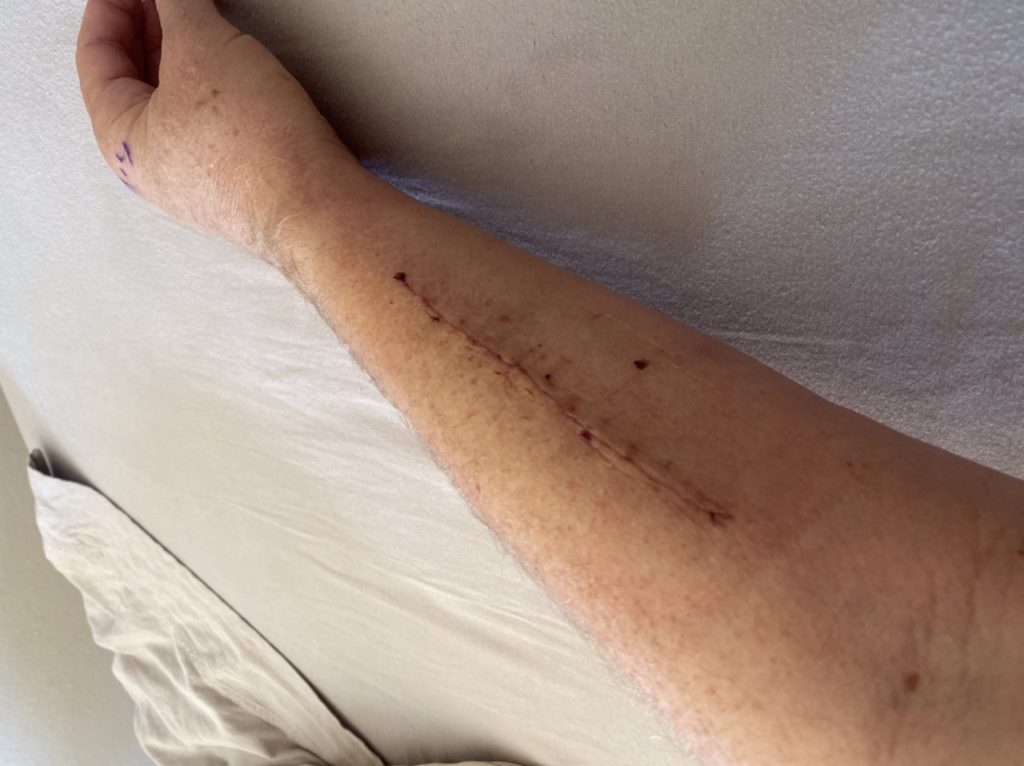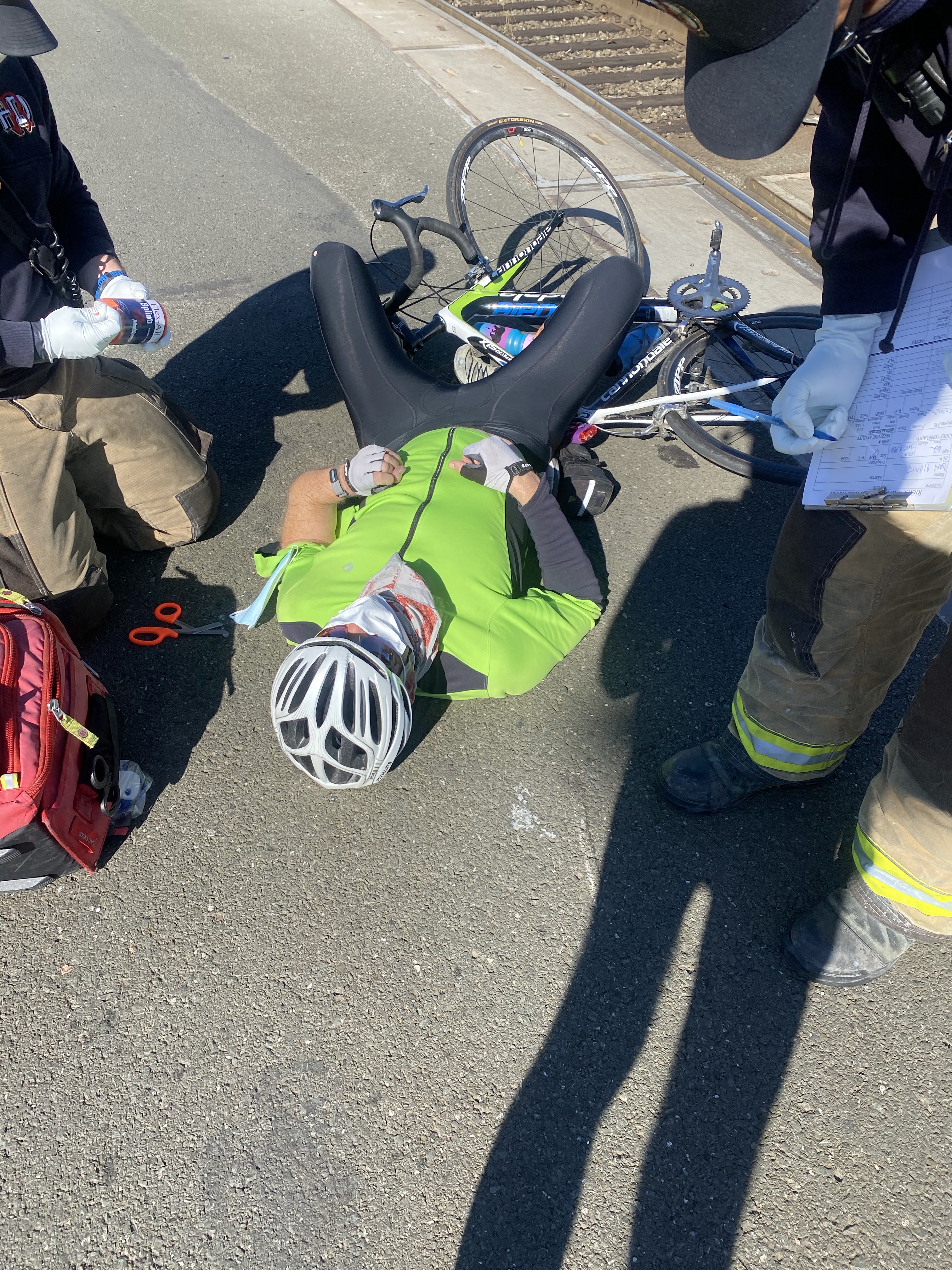2015 was a whopping good year for me. Before I start setting goals or making resolutions for 2016, I’m going to focus on some things that worked out well in the past year.
The best thing I did all year was to participate in David Weinberg’s 10-week course, “Advancing in Stillness,” which advanced my mindfulness practice and helped me get focused on living my values. The prerequisite 8-week mindfulness course—which I completed in 2014—was useful in its own right. The 10-week graduate course, which ran from January to April, marked a turning point in my personal development. In particular, I made progress accepting how PTSD affects me, and how it has affected me throughout my life.
Most importantly, after finishing the course, I continued to meditate regularly for the rest of the year. I use Insight Timer, and after a free update came in May, the app started tracking my sessions. So I know I meditated on 35% of the days since May. My routine usually includes some yoga poses before I settle into my zafu.
I continued my weekly psychotherapy sessions—something I have done for eight years now. At times during 2015 I felt it might be time to cut back or even stop, because in general I’m happier than I’ve ever been. However, I continued and plan to continue this work as long as it is expanding the horizons of my emotional experience. It contributes a lot to my effectiveness as a parent and partner.
Throughout the year, I continued to bicycle regularly. I participated in roughly half the Saturday rides with the Oakland Yellowjackets. When I could, I went out for a solo ride mid-week as well. On the Yellowjackets rides, I didn’t hold back taking the lead of our Advanced Intermediate group. I found that I could be comfortable doing that, and I found that I could measure my success in the strength of the group’s camaraderie and by the glow in the faces of my fellow riders. And I could accept, with only mild frustration, the times when the group didn’t hold together as well as I’d like.
I finished one century ride in May. I trained for another in October, but a sudden bout of flu caused me to abandon that ride at the last minute. Most of the year, I felt fine and strong, if a bit more creaky than in 2014. Best of all, I remember feeling, on a few of those Saturday rides, that I was having about the best experience anybody ever had, rolling through the impossibly scenic Bay Area in the company of friends.
I got some inspiration from reading Joel Friel’s book, Fast After 50, in particular the advice about continuing to train near your cardiovascular limits as you age.
Another big help: Scott Adams (creator of Dilbert), in his somewhat odd and throw-away collection of thoughts titled How to Fail at Almost Everything and Still Win Big, has some good advice on changing eating habits. I followed that advice—principally about refocusing your cravings to protein and vegetables, and staying away from carbs—and quickly lost about half of the extra 10-15 pounds I’ve been carrying around for a few years now.
As a parent, I accompanied Zoe into the “big kid” stage, with big emotions and suddenly, a lot of differentiation. She’s managing a big portfolio—including first-grade expectations, navigating the elementary school social landscape, and shuttling between Melanie’s household and mine. Looking back on the year, my recollection of her occasional tantrum is muted, as is my frustration with her not-so-occasional resistance to following my direction. Brighter, and sharper, are my memories of a lot of playful roughhousing, the pleasures of beginning to read together, and sharing the fun of learning new games and new skills. I drew a lot of insights from these books: Siegel and Bryson, No-Drama Discipline, and Ames and Ilg, Your Six Year Old: Loving and Defiant.
I worked a lot this year, billing over 1,600 hours, in addition to time administering the business and the occasional gig done for promotion or pro bono.
I liked almost all of it. My working environment is beautiful and suits me well. My clients are good people; I’ve known some of them for decades, others for a few years; we share values and for the most part common perspectives on environmental protection, bureaucracy, and other aspects of the work we do. My interactions with them are a real pleasure.
I got a lot of satisfaction from presenting my accumulated knowledge to new audiences and from preparing documents and tools that are used by many people in their work. This year, I often left meetings and presentations exhausted but also feeling validated and appreciated.
During the course of the year I realized I was enjoying planning and designing projects a lot more than I enjoyed dealing with policy and regulations. However, I’m not ready to give up the higher-level side of my work, as I am way invested in advancing in my ideas about how urban runoff should be managed, and I like seeing those ideas take hold (and less worthy ideas held at bay), when it comes to mandates and funding.
Toward the end of the year I invested in renewing my technology—moving my files to the cloud and upgrading my software to subscriptions. It’s taken a lot of effort to reorganize and reconfigure things, but I now can access email, calendar, contacts, and files—and do various levels of editing—on three devices: a Windows 10 desktop (with two monitors), an iPhone 6s+, and a iPad Pro. To my mind, this is another aspect of having a work environment that is, in fact, very pleasurable to be in.
I think that as time passes and I look back on this year from a more distant perspective, what I will remember most vividly—what I hope to remember most vividly—will be the vacations and trips, short and long. There were a lot of them:
- Our family started the year where I am as I write this: In Monterey, tide pooling on New Years Day at Point Lobos State Reserve.
- Late January: The first of four seasonal family trips to Yosemite, sightseeing in the valley and stopping near Crane Flat to find a patch of snow—rare in the drought winter of 2014-2015..
- February: Four nights backcountry truck-camping in Death Valley National Park with Zoe, including a memorable day wandering down upper Monarch Canyon.
- April: Spring Break exploring Mexico City, with day trips to Teotihuacan and Xochimilco.
- Memorial Day: Another family trip to Yosemite, leaving the crowds behind to bicycle around the Valley.
- June: two nights family birthday backpacking to Coast Camp, in Point Reyes National Seashore, including tide pooling at Sculptured Beach. Another day playing in Stinson Beach.
- July: an 8-day family road trip through Humboldt County. Bicycling on the Avenue of the Giants. Whitewater kayaking (in IKs) and rapid-surfing on the Trinity River.
- August: I joined my old friend Stephen Zunes for a 4-day backpacking trip through the Hoover Wilderness and Yosemite Wilderness.
- September: A weekend at Camp Tawonga, and then another family trip to Yosemite, this time to Tuolumne Meadows, on the last day before the high country closed for the season.
- December: Zoe and I visited by dad Ted and his wife Laura in Albuquerque, and awoke to a lovely snowfall.
- Also in December, our fourth trip to Yosemite, skating at Curry Village and stopping on the way out to sled in fresh, abundant snow near Crane Flat.
- And back to Monterey for New Years Eve. This is the fourth year we’ve done that, both times including kayaking in nearby Elkhorn Slough.
Politically, I found the year frustrating, painful, and more than a bit enlightening. Donald Trump is astonishing in his crudeness and directness, but he is characteristically American, and his popularity shouldn’t be surprising to anyone. Bernie Sanders’ 15 minutes of fame, on the other hand, is more troublesome to me. He is a leftist, and I have been a leftist all my life, and what is wrong with his campaign is—I’m thinking—what is wrong with the left, and has been wrong with the left. I think Barack Obama has been a great President and I think Hillary Clinton will be an even better President (I’m just finishing reading Hard Choices, and though I’m a critic of US foreign policy, and don’t accept many of her assumptions and views that are consistent with that policy, I think she is thoughtful, and capable.) I think that in a few more cycles liberal Democrats will control all three branches of the Federal government, which is cause for hope.
I found some time to improve my mind through reading, and I advanced my perspectives on science and society: Ta Nahesi Coates’ Between the World and Me, and the strange and wonderful The Singular Universe and the Reality of Time (Ungar and Smolin), which I am still working on, have been especially worth the time invested.
So those are my reflections on the outgoing year. Next up: My view ahead.




 I stopped the bike, pulled my phone out of my jersey, and dialed 911. As the phone connected, a white Dodge sedan with front end damage pulled across the intersection and parked next to where I was standing, headed the wrong way. At the same time, the injured man got to his feet and staggered across the intersection toward me, then collapsed at the curb. A woman went to comfort him. I told the 911 operator a car had hit a pedestrian, who was seriously injured. I stayed on the line for a few minutes until a fire engine pulled up. People were out of their cars, gathering around.
I stopped the bike, pulled my phone out of my jersey, and dialed 911. As the phone connected, a white Dodge sedan with front end damage pulled across the intersection and parked next to where I was standing, headed the wrong way. At the same time, the injured man got to his feet and staggered across the intersection toward me, then collapsed at the curb. A woman went to comfort him. I told the 911 operator a car had hit a pedestrian, who was seriously injured. I stayed on the line for a few minutes until a fire engine pulled up. People were out of their cars, gathering around. By this time, I’ve heard snippets of bystanders’ conversations, and I’m starting to put the pieces together. The injured man wasn’t a pedestrian, he was driving a motorcycle, which had smashed into the other side of the Volvo. But why?
By this time, I’ve heard snippets of bystanders’ conversations, and I’m starting to put the pieces together. The injured man wasn’t a pedestrian, he was driving a motorcycle, which had smashed into the other side of the Volvo. But why? As I rode back through the intersection, on my way home, the driver was putting the ambulance in gear. I stopped for a look at the motorcycle and then pedaled home.
As I rode back through the intersection, on my way home, the driver was putting the ambulance in gear. I stopped for a look at the motorcycle and then pedaled home.
